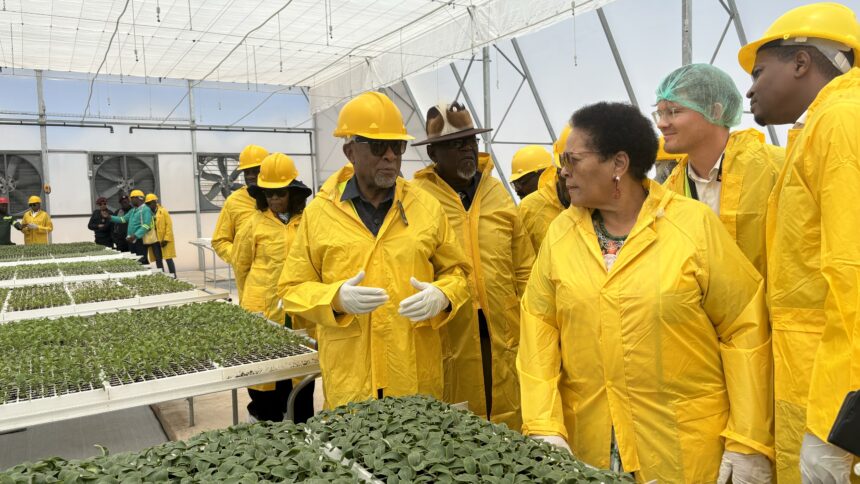The Daures Green Hydrogen Consortium has hit back at detractors of the massive project.
The consortium is constructing a green hydrogen village on the fringes of the desolate Dorob National Park in the heart of an isolated Namibian landscape.
Project leaders said, completion of the development has been severely hampered by supply chain constraints, specifically sourcing an electrolyser, which is an integral part of producing green hydrogen.
The Daures Green Hydrogen Consortium is run by Enersense Energy Namibia, which holds a 90% stake.
Last week, The Namibian reported that the project management had asked the German government, who fully funds the initiative, for more capital after spending more than N$230 million, to establish the green hydrogen village. The article noted that the German government is now allegedly considering terminating support of the project, which would potentially force the consortium to seek funding from the Namibian government.
The article added that Daures Green Hydrogen Consortium chief executive, Jerome Namaseb, confirmed the need for additional funds.
“The initial funding request was N$15.1 million but the project received a reduced budget of N$12 million. The project attempted to absorb this budgetary reduction; however, this was unfortunately not feasible,” Namaseb was quoted as saying.
He added that the initial allocation to the project did not make provision for operations, hence the latest request intends to ensure the facility reaches self-sufficiency.
Meanwhile, a media statement issued yesterday by the Daures consortium said there are stringent measures in place for the management of payments as these are processed on a progress payment basis on completion of work, subject to verification by the awarding institution.
“For avoidance of doubt, there is no payment made by the funder if work is not done. There are robust controls in place to manage all procurement and to ensure that project funds are utilised for the intended purpose,” reads the consortium’s statement.
The statement added that the Daures Green Hydrogen Village remains committed to contributing to the development of a thriving green hydrogen economy with potential for both local and international utilisation of green hydrogen and its derivatives, while creating research opportunities for local and international students. It continued that thus far the project has provided jobs to 376 Namibians and has made use of 23 small and medium enterprises during construction of the pilot phase, with intentions to generate further opportunities for Namibians.
Acknowledging the article in The Namibian, Daures Green Hydrogen Village stated: “While it is appreciated that these allegations were made in a political setting, leaving the unfounded allegations unattended has the risk to prove costly not only to the Daures Green Hydrogen Village, but also Namibia’s general efforts to create new industries that are aimed at bolstering the country’s fight against unemployment and increased industrialisation”.
The consortium added that the Daures Green Hydrogen Village is still primed to become Africa’s first 100% net zero green community, with a broader mandate to showcase the sustainable production of green hydrogen and ammonia from renewable sources. The project aims to realise a multi-faceted development that is among the first of its kind in Africa and is located in one of Namibia’s most isolated areas while remaining off grid.
“It is imperative to note that the Daures project has been funded 100% by the BMBF, a ministry within the German government. Publicly available information, shared through the media last month, provides a comprehensive update regarding the status of the project, that currently stands beyond 95% completion. Chief among those is the successful construction of the pilot phase which is practically complete and the agriculture facility which was inaugurated by President Nangolo Mbumba. In addition to this, all equipment required for the production of green hydrogen and green ammonia has been procured and has been delivered and installation will commence in due course,” the consortium stated.
Initially, the consortium aimed to produce crops and green hydrogen by March this year. This deadline was extended to June and then subsequently to September. Now, as of November 2024, the project remains incomplete but a source said the first green hydrogen could now be possible during the first quarter of 2025.


